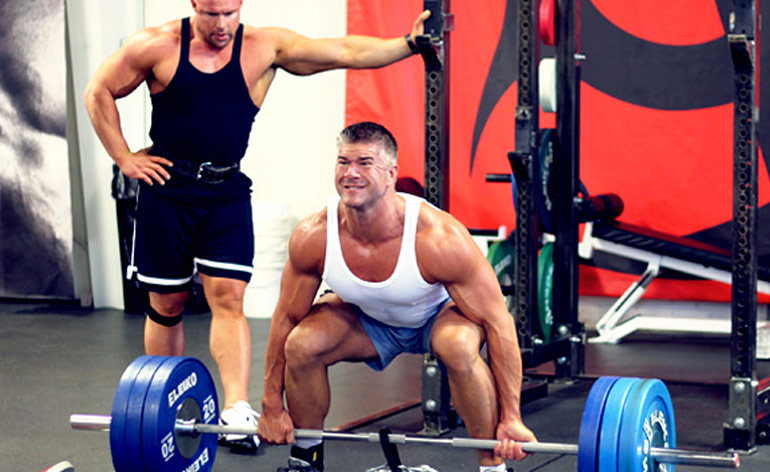
The deadlift is an excellent exercise for strength and muscle gains. Here we look at 10 Benefits and Tips for Deadlifts and why you should incorporate them into your own training!
1) There are many variations of the deadlift which can be used to suit an individual’s goals, build, age, gender, experience level and other factors. Older lifters and taller lifters may find block pulls advantageous to reduce stress on the lower back. Snatch grip deadlifts are useful for bodybuilders who want extra upper back muscle.
2) Deadlifts aren’t limited to being performed on a barbell. Dumbbells, kettlebells, trap bars, deadlift machines and specialized deadlift handles can all be used to practice this exercise and help you build strength and muscle.
3) You can build superhuman levels of strength with dedication to your deadlift training. Lifting 2.5 times your bodyweight is a realistic goal within several years’ training. Some lifters achieve triple bodyweight deadlifts. Powerlifter Lamar Gant, achieved a gigantic five times his bodyweight deadlift in 1985!
4) Deadlifts can be trained in the same workout as squats and doing so can lead to big gains in lower body strength. Several 5 x 5 programs, (such as Reg Park’s program), have squats and deadlifts performed within the same workout.
5) Immense grip strength can be built by using deadlift variations which target the hands. Thick-bar deadlifts, single-hand deadlifts and Reeves deadlifts are excellent choices for developing superior grip.
6) Your mindset will get stronger as you aim to progress in the deadlift. Lifting a bar with ten 20kg plates on it takes a lot of self-belief, confidence and razor sharp mental focus.
7) High rep work will lead to great muscle gains and will improve your conditioning into the bargain. It’s a great change of pace from heavy deadlifting and doesn’t fatigue your central nervous system as much.
8) Deadlifts can be done in a home gym. Unlike the other two powerlifts (squat and bench press), deadlifts don’t require a power rack or a spotter. Even with a limited amount of weight, altering the variables of volume, rest time between reps, and rep tempos can make a lighter weight very challenging. The results are strengthened tendons, sinews, deeper muscle fibre stimulation and growth.
9) Isometric training which is about using force against resistance without changing your muscle length (as in pulling on an immovably heavy weight for 30 seconds) is well suited to deadlifting. Isometrics can help you break through plateaus and focus on strengthening any weak points in your deadlift.
10) There are many ways to challenge yourself to improve your deadlift and test your ability. For example, performing as many reps as possible within a certain timeframe with one and a half times your bodyweight on the barbell is demanding and really tests your courage. Mind over matter!
Explore the many deadlift exercises, methods and challenges and be creative in your deadlift training. The hard work will be more than worth it!









